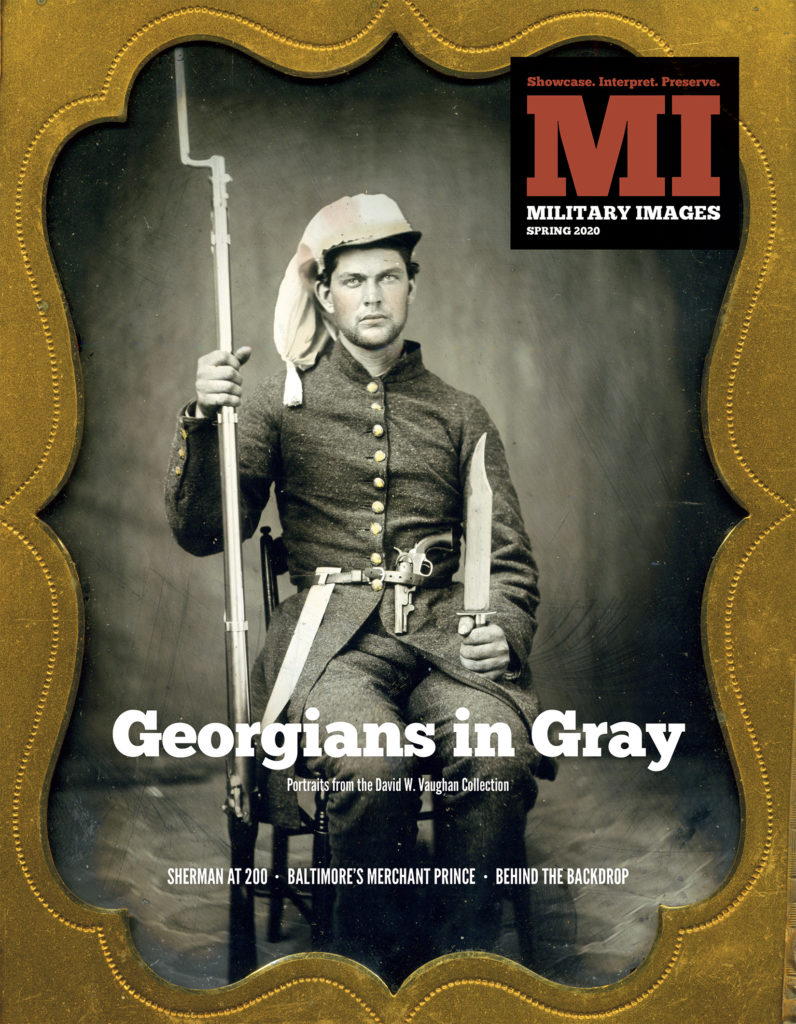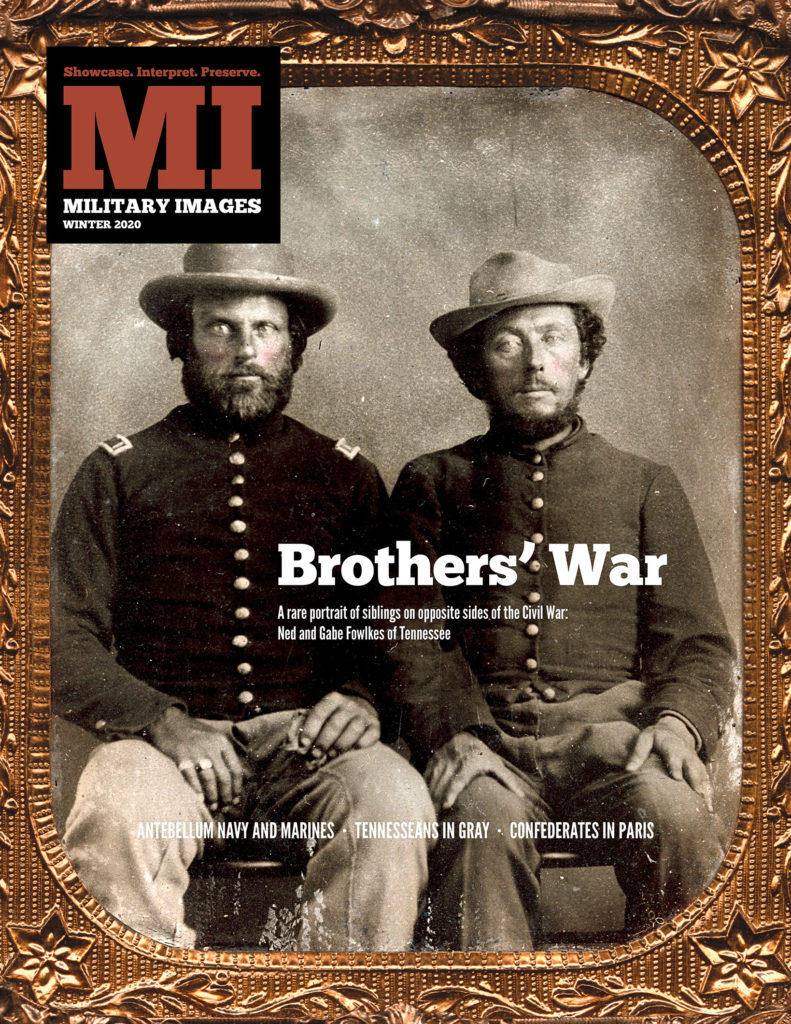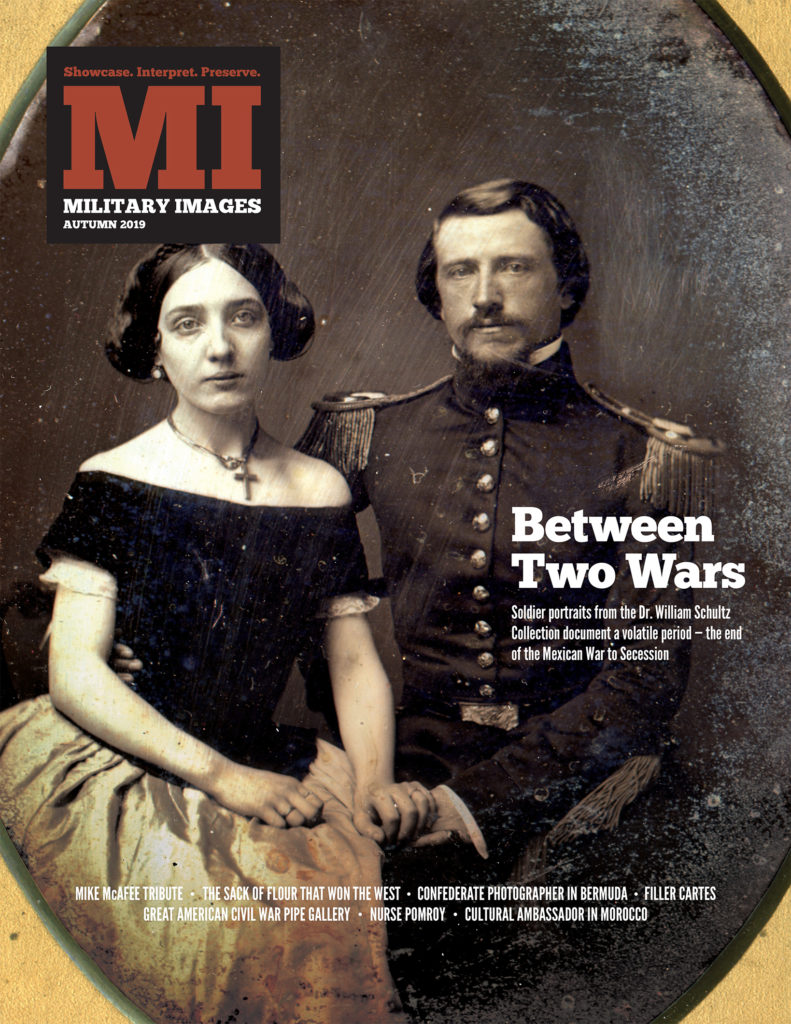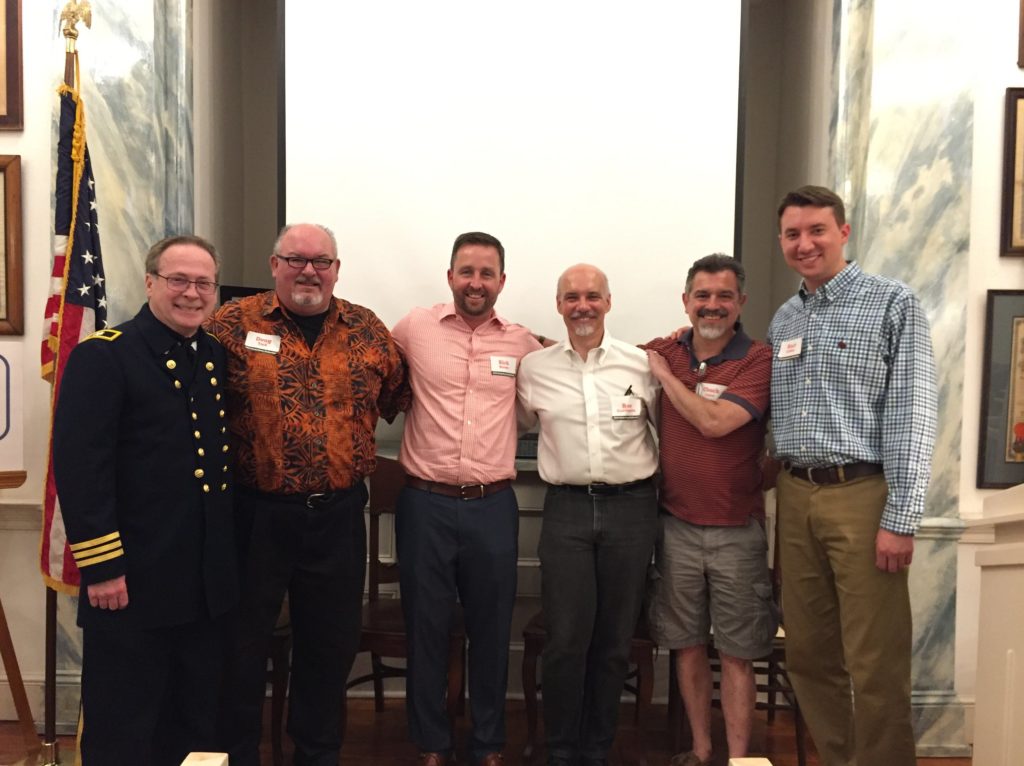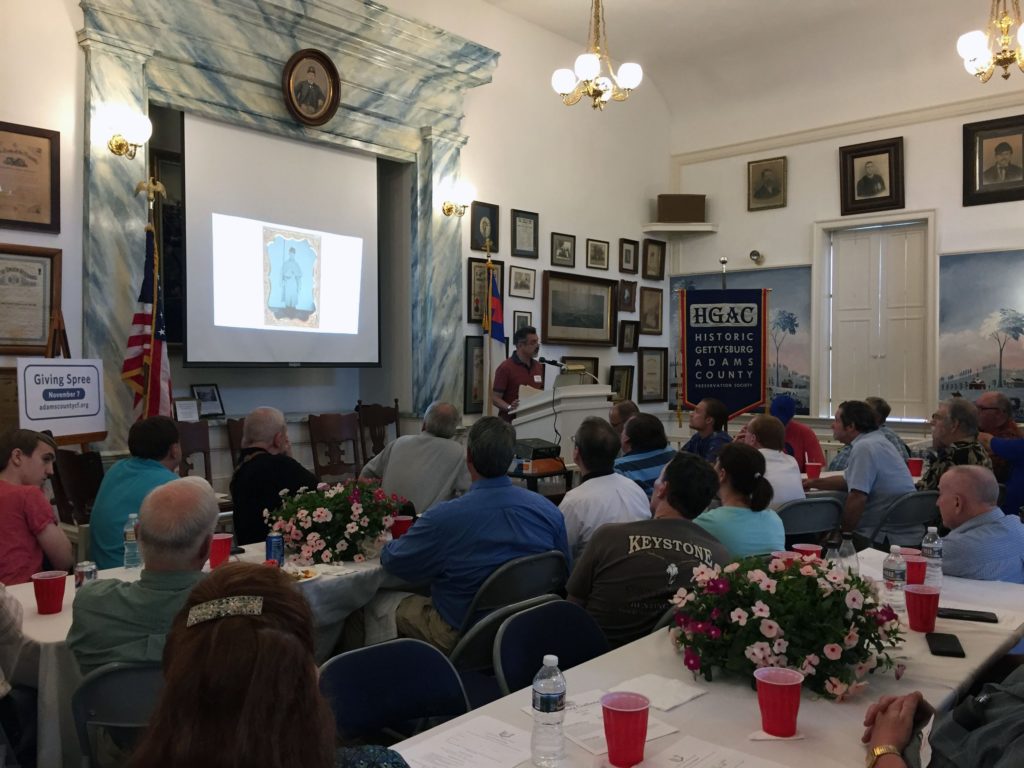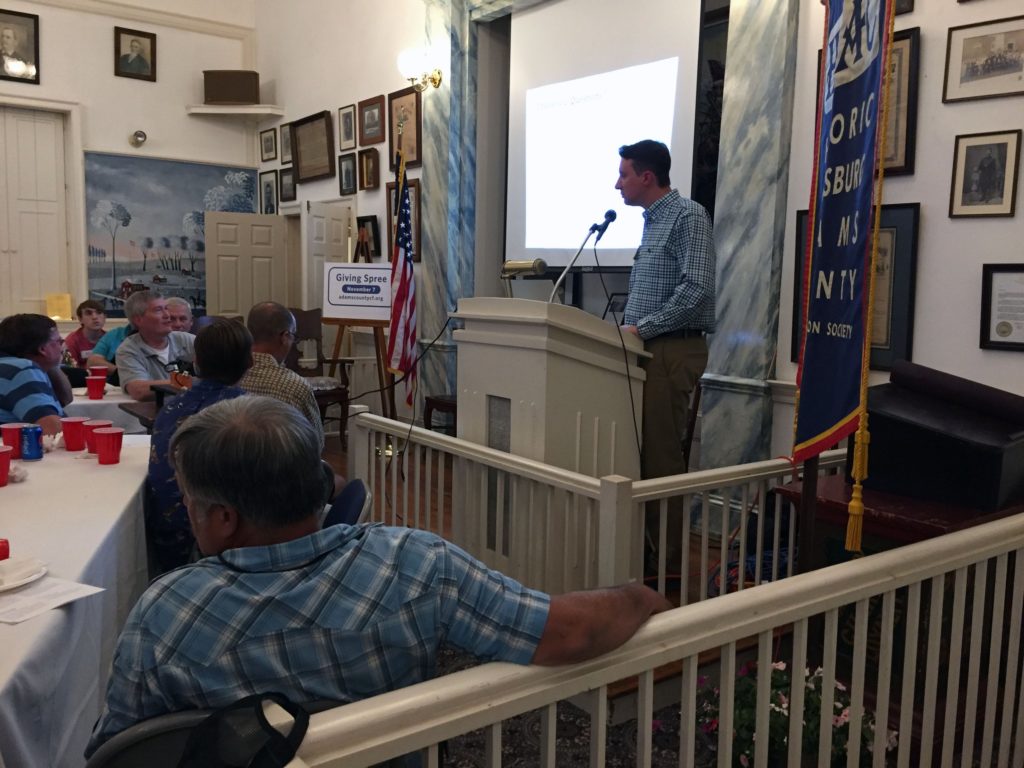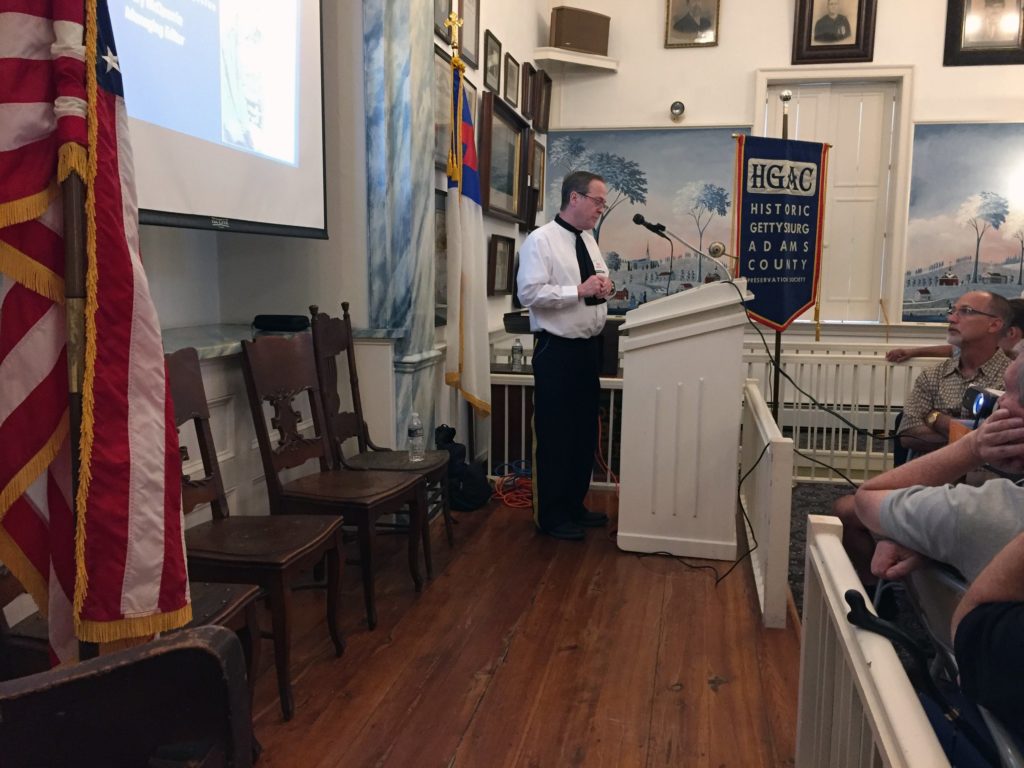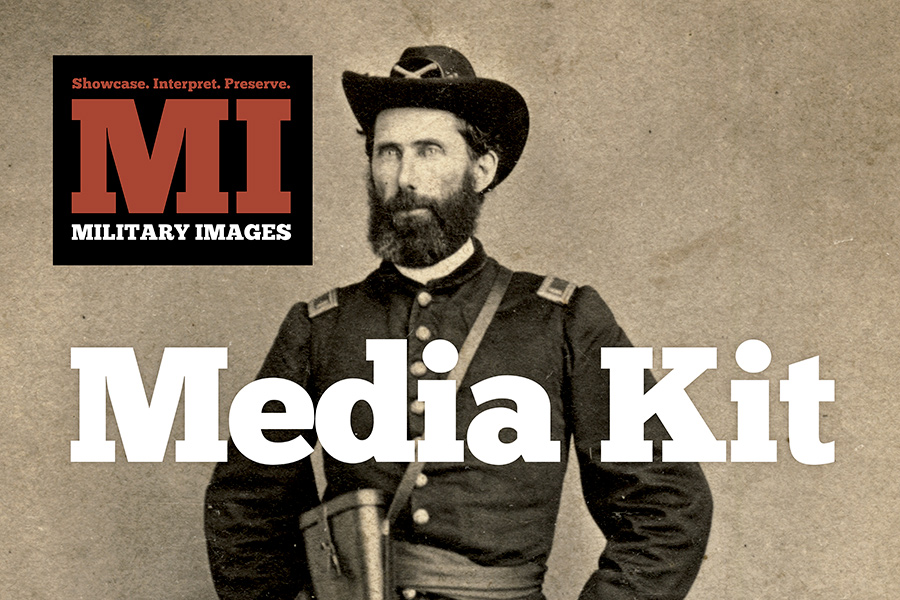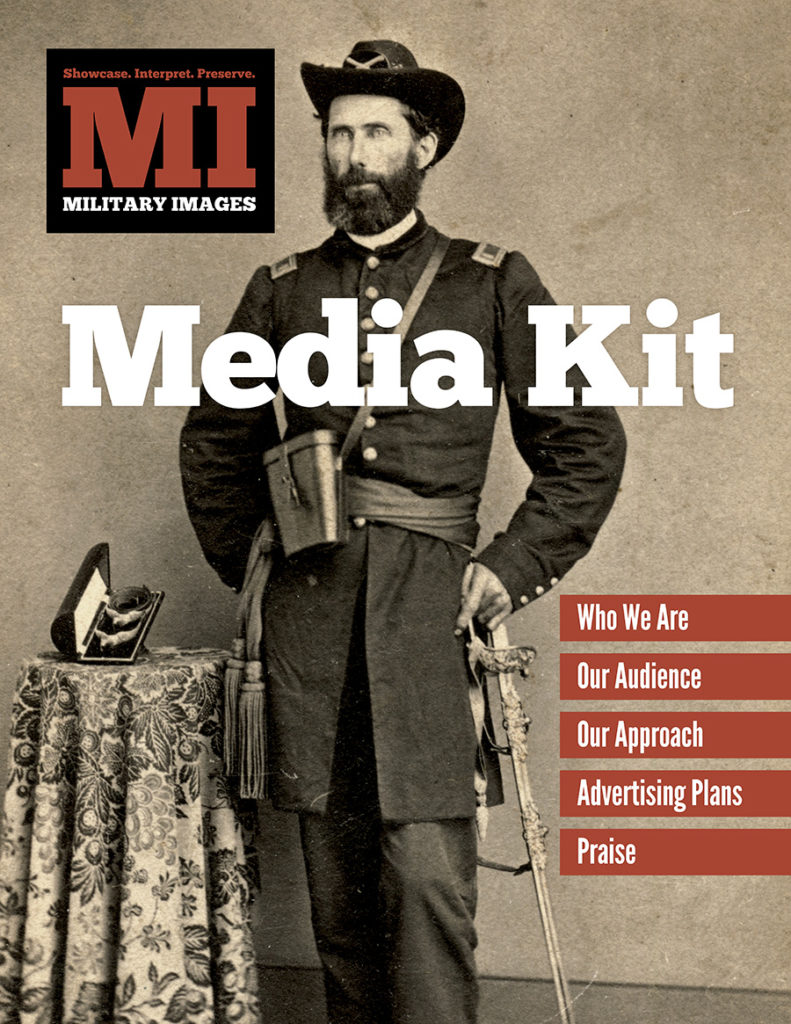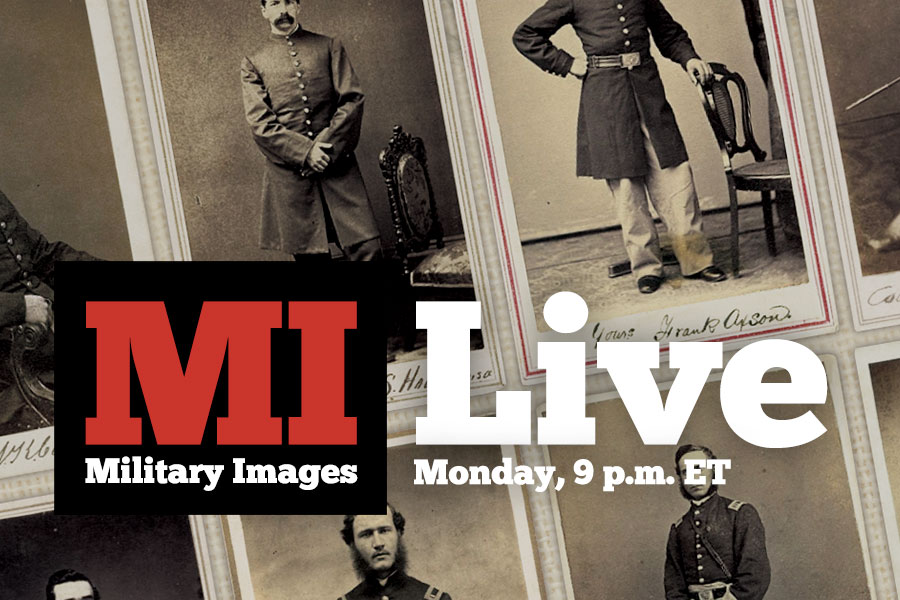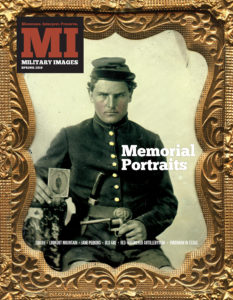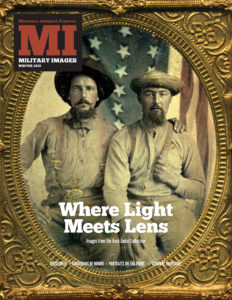The complete issue

Vol. XXXVIII, No. 3
(80 pages)
Print edition: Visit our store to check availability
Digital edition: Visit JSTOR.org to purchase
Subscribe to MI
Explore the MI Archives:
Browse | Advanced search | Tutorial
Inside
Cover image
A quarter-plate ambrotype from the Dan Schwab Collection pictures Newton J. Ragon of the 13th Mississippi Infantry.
Table of Contents (p. 1)
Editor’s Desk (p. 2)
The editor dedicates his column to “Publishing in a Pandemic.”
Mail Call (pp. 3-4)
Feedback includes comments about the loss of historical context when mats and cases are replaced on hard-plate images, details about Col. John R. Hart’s 6th Georgia Cavalry, and inherent problems with colorization.
Military Anthropologist (p. 4)
Visualizing Edward and Henry T. Anthony’s November 1862 Catalogue of Card Photographs as a pie chart.
Passing in Review (p. 6)
MI Senior Editor Ron Field reviews American Zouaves, 1859-1959: An Illustrated History (McFarland & Company, Inc.) by Daniel J. Miller.
Photo Sleuth by Kurt Luther (pp. 8-10)
In “How to Trust the Worthiness of an Identification,” Luther reveals the results of a survey of collectors to gauge various forms of image identification. He grouped the data into three categories, high-, medium-, and low-touch sources. Period inscriptions on the photograph with validation scored highest, and images identified only with military records and other textual documents scored lowest.
Antebellum Warriors (p. 12)
A quarter-plate daguerreotype of John Reynolds by renowned photographer Jeremiah Gurney may have been a portrait promised to his sister, Ellie, in an 1858 letter.
The Honored Few (p. 14)
Christopher C. Bruton of the 22nd New York Cavalry told the story of his capture of the headquarters flag of Confederate Lt. Gen. Jubal Early to a group gathered at the War Department in Washington, D.C., in March 1865. Among those present were Secretary of War Edwin M. Stanton and Libby Custer, the wife of the general in whose division Bruton served. A son of Ireland, Bruton received the nation’s highest military honor for his act.
Most Hallowed Ground (p. 16)
William Henry Gobrecht, surgeon of the 49th Pennsylvania Infantry, enjoyed high name recognition among health care workers. In 1858, his American edition of the textbook Wilson’s Anatomy become the standard text for doctors. His postwar career brought him to Washington, D.C. for a job at the Pension Bureau. Upon his death in 1901, his remains were interred in Arlington National Cemetery.
The Citizenry by Alison Renner (p. 18)
A tintype, believed to be previously unpublished, features Lavinia Ellen “Vinnie” Ream, the sculptor who rose in prominence during the Civil War. Her best known works are of Abraham Lincoln—an 1864 bust for which he sat, and an 1871 statue that stands in the U.S. Capitol rotunda.
Fakes, Forgeries and Frauds by Perry M. Frohne (pp. 22-23)
In “Rembrandt You Are Not, Sir!,” Frohne details how fakers use paint to transform ambrotypes and tintypes of civilians into soldiers and sailors.
Three Days in July: Faces of Union and Confederate Soldiers at the Battle of Gettysburg, edited by Charles Joyce (pp. 24-39)
A collection of more than two dozen ambrotypes, cartes de visite, and tintypes of Union and Confederate soldiers at the Battle of Gettysburg, each accompanied by the story of each man’s experience during the fight. Among those included are 1st Lt. Robert C. Knaggs of the 7th Michigan Infantry, Pvt. Clark Stevens of the 2nd New Hampshire Infantry, Pvt. Hiram Gilbert of 76th New York Infantry, Lt. Col. Theobold Alexander Von Mitzel of the 74th Pennsylvania Infantry, Pvt. David “Davy” Barnum of the 5th Alabama Infantry, Capt. James Washington Beck of the 44th Georgia Infantry, Lt. Col. Wharton Jackson “Jack” Green of Tennessee and more. Contributions of images and text included Rick Carlile, Ronald S. Coddington, Guy DiMasi, Thomas Harris, Tom Huntington, Britt C. Isenberg, Ross J. Kelbaugh, Jeff Kowalis, C. Paul Loane, August Marchetti, Paul Russinoff, Dan Schwab, Karl Sundstrom and Daniel Taylor.
America’s “Good Death”: Capt. Charles W. Billings of the 20th Maine Infantry at Little Round Top by Paul Russinoff (pp. 40-45)
Capt. Charles W. Billings of the 20th Maine Infantry suffered a mortal wound at Little Round Top. Russinoff brings together primary sources and artifacts for the first time to tell Billings’ story, which underscores historian Drew Gilpin-Faust’s concept of “The Good Death.”
A Romance Fueled by Photographs: At Gettysburg, an Iron Brigade Bandsman and a former tavern keeper’s daughter find love and likeness by Charles Joyce (pp. 46-49)
The Adams County Courthouse in downtown Gettysburg became a scene of death and dying during the fighting as the recently constructed building became a makeshift hospital. It also provided the backdrop for love between Susie Herr, the daughter of a former tavern keeper, and German immigrant Jacob F. Gundrum, a musician in the band of the famed Iron Brigade. This is their story.
The Likeness and Legacy of The Children: A history, study and survey of an iconic Civil War image by Mark H. Dunkelman and Richard Leisenring, Jr. (pp. 50-53)
The death of Amos Humiston of the 154th New York Infantry at Gettysburg and the ambrotype of his three children clutched in his hands is one of the best-known stories of the Civil War. Historian Dunkelman, who has written extensively about Humiston and the 154th, and MI Contributing Editor Leisenring team up to examine surviving images of “The Children of The Battle-Field.”
Old Abe and the Army of the American Eagle by Richard Leisenring, Jr. (pp. 54-57)
Chicago printer Alfred L. Sewell devised a novel fundraiser to support the Union army: Selling carte de visite sized portraits of Old Abe, the famed Eagle mascot of the 8th Wisconsin Infantry. Sewell targeted kids, who purchased tens of thousands of the images under the auspices of the U.S. Sanitary Commission. Children earned commissions in Old Abe’s army, and a small number received Medals of Honor for the number of images purchased.
Before Movies, Americans Viewed the Civil War Through the Magic Lantern by Robert Marcus (pp. 58-61)
During the years following the Civil War, American audiences packed venues across the country to experience the late conflict through glass plates projected on a big screen—the precursor to motion pictures.
The Last Parade: Cameras captured the pomp and circumstance in New York City on July 4, 1860. Nine months later, the Civil War began by Ron Field (pp. 63-66)
Photographer Edward Anthony and his assistants set up stereoscopic cameras at two locations to capture the city’s militia marching along the Independence Day parade route. Field details the regiments pictured in nine surviving stereo cards.
Mariner. Teamster. Refugee. Surgeon’s Steward. The life and naval service of William Tyler Cross by Jack Hurov (pp. 68-70)
William Tyler Cross became an unlikely pawn in game of political brinkmanship between the U.S. and Mexico in 1862. He managed to return safely and went on to serve in one of the Navy’s most underappreciated positions—surgeon’s steward. The role was similar to its counterpart in the army, the hospital steward.
Journey to Lynchburg: William Hawkins of the 15th New York Cavalry in Virginia’s Shenandoah Valley by James Crane III (pp. 72-74)
Hawkins suffered a gunshot in the head and instant death during an action in the Diamond Hill neighborhood of Lynchburg, Va., on June 17, 1864. He had been in uniform for less than a year. A farmer, he left behind a widowed wife and three orphaned children—and two photographs in civilian clothes and a military uniform.
Stragglers: Distinctive Images from MI contributors (p. 75)
Included are portraits of two revolver-packing Union troopers, a Bluejacket, and a teamster taken in Corinth, Miss.
Behind the Backdrop: Origins, artistry and photographers by Adam Ochs Fleischer (pp. 78-79)
In “Wartime Letters Document the 2nd Cavalry Division Backdrop,” Fleischer examines the distinctive painted canvas with tents, a guard and hills with forts.
The Last Shot (p. 80)
A cabinet card from the Robert Elliott Collection pictures a painting of Col. Harry Burgwyn of the 26th North Carolina Infantry, who suffered a mortal wound in a charge against elements of the Iron Brigade on July 1, 1863. The photograph was presented to the officer who succeeded Burgwyn in command, Lt. Col. John R. Lane.



